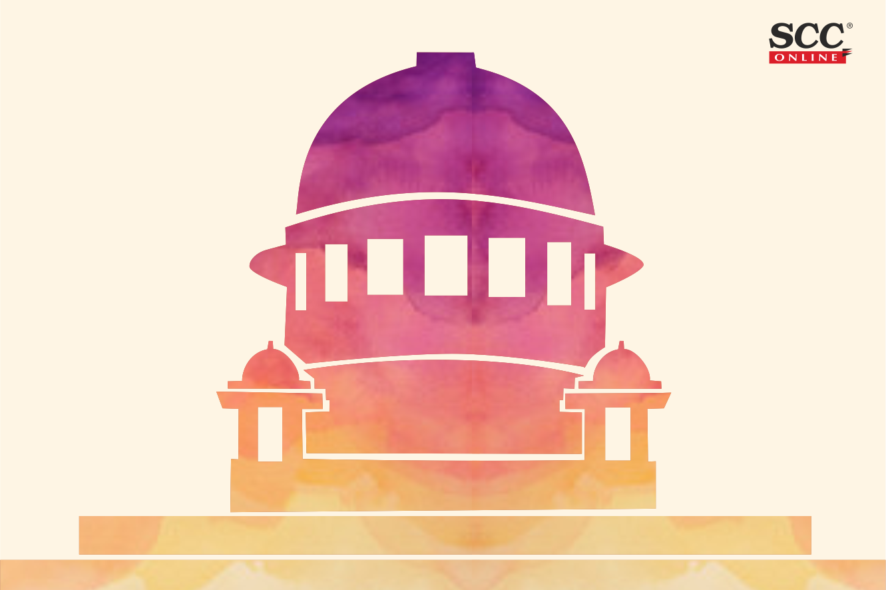Supreme Court: The Division Bench of S. Abdul Nazeer and Krishna Murari, JJ., addressed a pertinent issue of whether the rent act would come to the aid of a “tenant in sufferance”.
Instant appeals were directed against the Orders passed by the Chief Metropolitan Magistrate, Esplanade, Mumbai rejecting the application filed by the appellant for restraining HDFC Bank, the first respondent from taking possession of the property in the appellant’s possession.
Financial Facility of Rs 5,50,00,000 was granted by HDFC Bank Limited to respondents 2 and 3 (the borrowers). Borrowers had mortgaged a property (Secured Asset) in favour of the Bank with an intention to secure the said credit facility.
Later, the Borrowers accounts were declared at non-performing assets, the Bank issued a notice under Section 13(2) of the Securitisation and Reconstruction of Financial Assets and Enforcement of Security Interest Act, 2002 to the Borrowers.
Appellant submitted that he is the tenant of the Secured Asset and has been paying rent regularly to his landlord since inception of his tenancy.
Appellant approached the Magistrate seeking protection of his possession of the Secured Asset as the Magistrate was ceased with the petition under Section 14 of SARFAESI Act filed by the respondent 1 – Bank. Though the magistrate had dismissed the registered tenancy placed on record by the appellant.
Analysis, Law and Decision
Bench noted that the appellant’s case was that he is a tenant of the Secured Asset and has paid the rent in advance.
However, in the detailed representation sent in response to the notice issued under Section 13(2) of the SARFAESI Act, the Borrowers did not claim that any tenant was staying at the Secured Asset.
The appellant provided a rent receipt claiming tenancy after the date of creation of mortgage.
Procedural mechanism for taking possession of the Secured Asset was provided under Section 14 of the SARFAESI Act.
Section 17 of the SARFAESI Act provides for the right of appeal to any person including the borrower to approach Debt Recovery Tribunal (DRT). Section 17 has been amended by Act No. 44 of 2016 providing for challenging the measures to recover secured debts. Under the Amendment, possession can be restored to the borrower or such other aggrieved person.
In the Supreme Court decision of Harshad Govardhan Sondagar v. International Asset Reconstruction Co. Ltd., (2014) 6 SCC 1, it was held that the right of appeal is available to the tenant claiming under the borrower.
In Kanaiyalal Lalchand Sachdev v. State of Maharashtra, (2011) 2 SCC 782, this Court has held that DRT can not only set aside the action of the secured creditor but even restore the status quo ante.
Court stated that in view of the appeal being in pendency from 2016, this Court proposes to examine the case on merits without directing the appellant to avail the alternative remedy.
A Three Judge Bench of this Court in Bajarang Shyamsunder Agarwal v. Central Bank of India, (2019) 9 SCC 94, after considering almost all decisions of this Court, in relation to the right of a tenant in possession of the secured asset, has held that if a valid tenancy under law is in existence even prior to the creation of the mortgage, such tenant’s possession cannot be disturbed by the secured creditor by taking possession of the property. If a tenancy under law comes into existence after the creation of a mortgage but prior to issuance of a notice under Section 13(2) of the SARFAESI Act, it has to satisfy the conditions of Section 65A of the Transfer of Property Act, 1882. If a tenant claims that he is entitled to possession of a Secured Asset for a term of more than a year, it has to be supported by the execution of a registered instrument. In the said decision of this Court, it was clarified that in the absence of a registered instrument, if the tenant only relies upon an unregistered instrument or an oral agreement accompanied by delivery of possession, the tenant is not entitled to possession of the secured asset for more than the period prescribed under the provisions of the Transfer of Property Act.
While noting the above discussion, Bench held that,
“…Rent Act would not come to the aid of a “tenant-in-sufferance” visàvis SARFAESI Act due to the operation of Section 13(2) read with Section 13(13) of the SARFAESI Act.”
In the present matter, there was doubt as to the bona fide of the tenant, as there was no good or sufficient evidence to establish the tenancy of the appellant.
The pleading of tenancy was not supported by any registered document, and adding to this, the appellant himself stated that he was a “tenant-in-sufferance”, therefore, he is not entitled to any protection of the Rent Act.
Another point expressed by the Court, was that even if the tenancy had been claimed to be renewed in terms of Section 13(13) of the SARFAESI Act, the Borrower would be required to seek the consent of the secured creditor for transfer of the Secured Asset by way of sale, lease or otherwise, after issuance of the notice under Section 13(2) of the SARFAESI Act and, admittedly, no such consent has been sought by the Borrower.
In view of the above, appeal were dismissed. [Hemraj Ratnakar Salian v. HDFC Bank Limited, 2021 SCC OnLine SC 611, decided on 17-08-2021]







